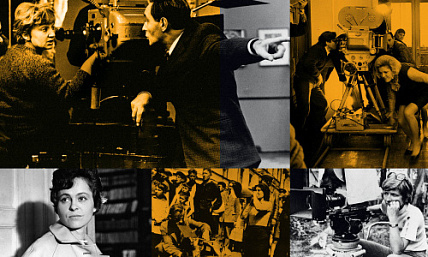The Trial. Franz Kafka and 20th-Century Art
.
Exhibition
The exhibition The Trial. Franz Kafka and 20th-Century Art seeks to reveal the parallels between the author’s works and the major art movements of the last century.
Franz Kafka predicted the 20th century. Even though all of Kafka’s novels, including The Trial that was written in the first years of World War I, were left unfinished, he still managed to portray – in an agonizingly accurate way – all the hardships that the 20th century would witness, from loneliness to absurdity to people’s inability to oppose the impersonal space.
Writing about the fears and tragedies of his characters, Kafka foresaw the rise of totalitarian regimes in Europe in the 1930s, the advance of fascist ideology, World War II, and humankind’s attempts to deal with the consequences of these catastrophes, which brought about a philosophy of alienation and pain. The visionary nature of Kafka's works and the paradoxical depth of their discreet poetic style make him one of the most important authors of the 20th century. Though his books were rarely published during his lifetime, they have since been translated into almost all major languages and his legacy has been an important cultural influence inspiring visual artists for many decades.
The exhibition The Trial. Franz Kafka and 20th-Century Art seeks to reveal the parallels between the author’s works and the major art movements of the last century. The exhibition is designed in such a way that visitors can choose between the two routes leading to its center, which alludes to Kafka’s novel The Castle.
The first of the two routes is a road down one of Kafka’s most celebrated novellas, The Metamorphosis. The transformation of the protagonist’s world is illustrated by the works of German expressionist artists such as George Grosz and Max Pechstein, Egon Schiele, and others.
The second route leads to a room echoing the interior of an office that looks like the one where both Kafka himself and Josef K., the protagonist of The Trial, worked. This section of the exhibition features works by conceptual artists, including Joseph Kosuth, Ilya Kabakov, Viktor Pivovarov, Dmitry Prigov, and more.
Yet another part of the show seeks to give visitors a different perspective on both Kafka’s legacy and his personality, defying the false repute of a morbid no-good who only wrote despairing stories about people in distress. Kafka actually boasted a refined sense of humor that also pervades his writings. And many of the facts of his life contradict the stereotypes that we have of him. A chapter from his novel Amerika has been reconstructed at the exhibition to help visitors get to know Kafka’s other side.
On display at the exhibition are more than 100 works on loan from the State Hermitage, the Pushkin State Museum of Fine Arts, the Russian Museum, the Tretyakov Gallery, the Shchusev Museum of Architecture, and other museums and private collections.
Age limit: 12+
With the support of:



General information partner:

Information partners:







Writing about the fears and tragedies of his characters, Kafka foresaw the rise of totalitarian regimes in Europe in the 1930s, the advance of fascist ideology, World War II, and humankind’s attempts to deal with the consequences of these catastrophes, which brought about a philosophy of alienation and pain. The visionary nature of Kafka's works and the paradoxical depth of their discreet poetic style make him one of the most important authors of the 20th century. Though his books were rarely published during his lifetime, they have since been translated into almost all major languages and his legacy has been an important cultural influence inspiring visual artists for many decades.
The exhibition The Trial. Franz Kafka and 20th-Century Art seeks to reveal the parallels between the author’s works and the major art movements of the last century. The exhibition is designed in such a way that visitors can choose between the two routes leading to its center, which alludes to Kafka’s novel The Castle.
The first of the two routes is a road down one of Kafka’s most celebrated novellas, The Metamorphosis. The transformation of the protagonist’s world is illustrated by the works of German expressionist artists such as George Grosz and Max Pechstein, Egon Schiele, and others.
The second route leads to a room echoing the interior of an office that looks like the one where both Kafka himself and Josef K., the protagonist of The Trial, worked. This section of the exhibition features works by conceptual artists, including Joseph Kosuth, Ilya Kabakov, Viktor Pivovarov, Dmitry Prigov, and more.
Yet another part of the show seeks to give visitors a different perspective on both Kafka’s legacy and his personality, defying the false repute of a morbid no-good who only wrote despairing stories about people in distress. Kafka actually boasted a refined sense of humor that also pervades his writings. And many of the facts of his life contradict the stereotypes that we have of him. A chapter from his novel Amerika has been reconstructed at the exhibition to help visitors get to know Kafka’s other side.
On display at the exhibition are more than 100 works on loan from the State Hermitage, the Pushkin State Museum of Fine Arts, the Russian Museum, the Tretyakov Gallery, the Shchusev Museum of Architecture, and other museums and private collections.
Age limit: 12+
With the support of:
General information partner:
Information partners:
OTHER EXHIBITIONS
Museum Archive


